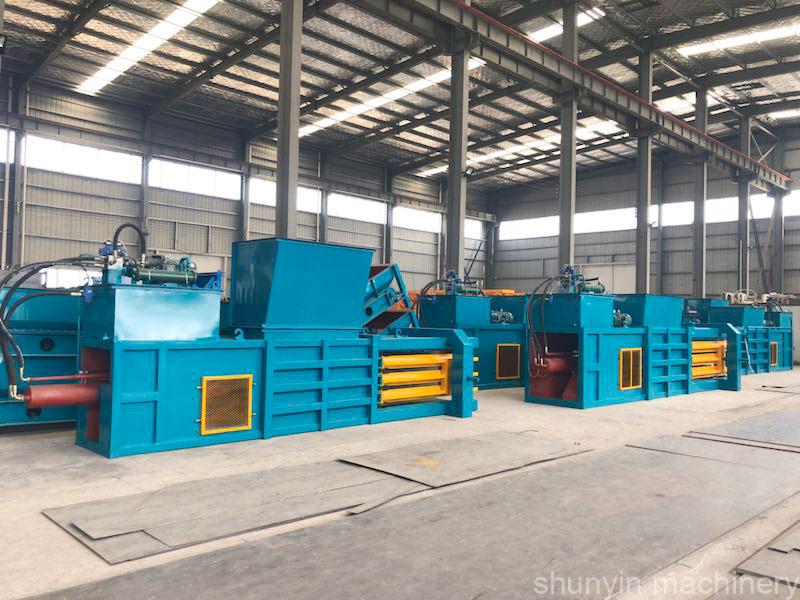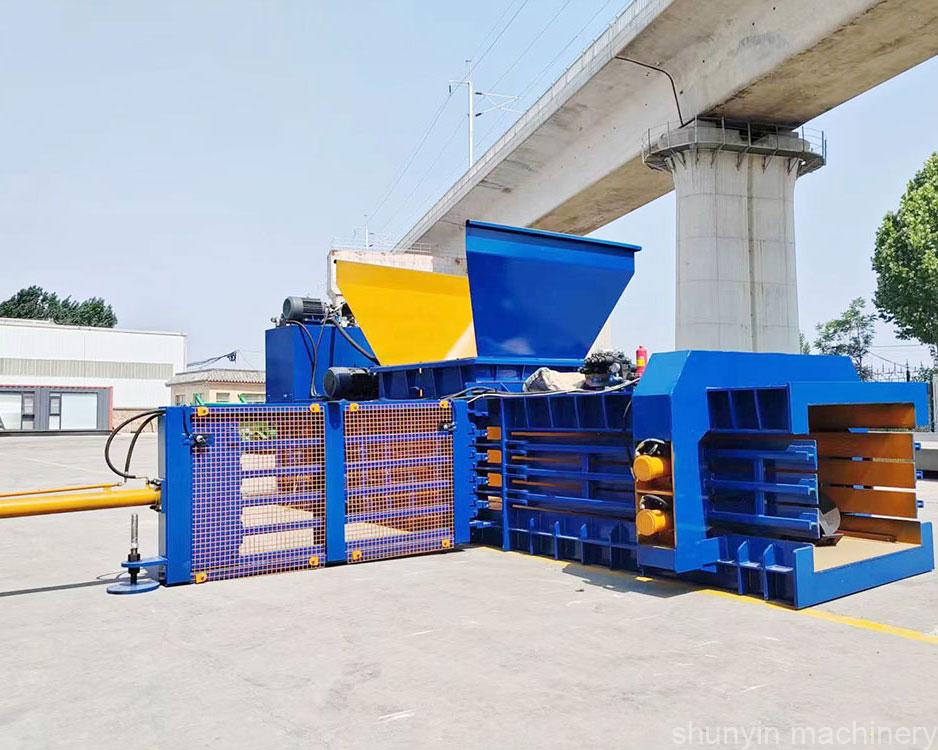
Struggling to find the right machinery for efficient plastic recycling? You’re not alone.
The best horizontal baler machine for plastic recycling in China depends on the specific needs of your business, but here are top considerations:
-
High Compression Power
Horizontal balers designed for plastic recycling offer high hydraulic compression, making them ideal for reducing plastic waste volume and improving storage and transportation efficiency. -
Versatility
The best machines can handle a wide range of plastic materials, such as PET, HDPE, LDPE, and more, making them suitable for diverse recycling operations. -
Automation Features
Machines with automated feeding, compressing, and tying systems reduce labor costs and increase efficiency, making them an excellent choice for high-volume operations. -
Durability
A durable baler machine, built with strong steel and high-quality components, ensures long-lasting performance and minimizes maintenance costs over time. -
Cost-Effectiveness
Horizontal balers from China typically offer great value with competitive pricing, without compromising on performance or reliability, making them an affordable option for many businesses.
Top Picks:
- Shunyin Horizontal Hydraulic Baler: Known for its strong compression, automation features, and affordable pricing, this machine is popular for plastic recycling.
- Jiangsu Mooge Machinery: Offers customizable horizontal balers with high-capacity options for large-scale plastic recycling operations.
Imagine transforming your plastic waste into manageable, compact bundles effortlessly.
What is a recycling baler?
Struggling to manage large volumes of recyclable materials? A recycling baler might be the solution you need.
A recycling baler is a machine designed to compress recyclable materials like plastics, metals, and paper into compact bales, making them easier to handle, transport, and store.

Recycling balers streamline the recycling process, reducing the space needed for storage and lowering transportation costs. They are essential in both industrial and commercial settings, helping businesses manage waste efficiently and sustainably.
Types of Recycling Balers
There are several types of recycling balers, each suited to different materials and operational needs:
| Type | Description | Best For |
|---|---|---|
| Horizontal Balers | Compress materials horizontally, suitable for high-volume operations | Plastics, Mixed Recyclables |
| Vertical Balers | Compress materials vertically, ideal for smaller spaces | Paper, Lightweight Materials |
| Two-Ram Balers | Utilize two rams for increased compression | Dense Materials |
| Single-Ram Balers | Use a single ram, typically more compact | Light to Medium Materials |
Benefits of Using a Recycling Baler
Implementing a recycling baler offers numerous advantages:
- Space Efficiency: Reduces the volume of recyclable materials by up to 90%, saving valuable storage space.
- Cost Savings: Lower transportation and handling costs due to compact bales.
- Environmental Impact: Enhances recycling efforts, contributing to sustainability goals.
- Operational Efficiency: Automates the baling process, reducing labor costs and increasing productivity.
What is plastic baling?
Confused about the plastic baling process? Let’s clarify how it works.
Plastic baling involves compressing plastic waste into dense, manageable bales using specialized machinery, facilitating easier storage, transportation, and recycling.

Plastic baling is a critical step in the recycling chain, ensuring that plastics are efficiently processed and prepared for recycling facilities. By compacting plastics, baling reduces the overall volume, making it more economical to transport and handle.
The Plastic Baling Process
The plastic baling process typically involves several key steps:
- Collection: Gathering plastic waste from various sources.
- Sorting: Separating different types of plastics to ensure purity.
- Shredding: Breaking down plastics into smaller pieces for easier processing.
- Compression: Using a baler to compress the shredded plastics into bales.
- Binding: Securing the bales with straps or wire for stability during transport.
Advantages of Plastic Baling
Baling plastic offers multiple benefits:
- Efficiency: Streamlines the recycling process by making plastics easier to handle.
- Cost-Effective: Reduces transportation and storage costs by minimizing volume.
- Quality Control: Ensures that plastics are uniformly compressed, enhancing recycling quality.
- Environmental Benefits: Promotes recycling, reducing the amount of plastic waste in landfills and oceans.
What is a baler in a warehouse?
Overwhelmed by waste management in your warehouse? A baler could be the key solution.
A baler in a warehouse is a machine used to compress and bind various types of waste materials, such as cardboard, plastic, and metal, into compact bales for efficient storage and disposal.

Using a baler in a warehouse setting can significantly improve waste management practices. It helps in organizing waste, reducing the space required for storage, and simplifying the process of transporting materials to recycling or disposal facilities.
Implementing a Baler in Your Warehouse
To effectively use a baler in your warehouse, consider the following steps:
- Assess Waste Types: Identify the types of waste generated in your warehouse.
- Choose the Right Baler: Select a baler that matches the volume and type of waste.
- Train Staff: Ensure that employees are trained to operate the baler safely and efficiently.
- Integrate into Workflow: Incorporate baling into your regular waste management procedures.
- Maintain the Equipment: Regular maintenance ensures the baler operates smoothly and extends its lifespan.
Benefits of Using a Baler in a Warehouse
Incorporating a baler in your warehouse offers several advantages:
- Space Savings: Reduces the volume of waste, freeing up valuable warehouse space.
- Cost Reduction: Lowers waste disposal costs by minimizing the amount of waste to be transported.
- Efficiency: Speeds up the waste management process, allowing for quicker turnover.
- Environmental Responsibility: Enhances your company’s sustainability efforts by promoting recycling and responsible waste disposal.
Example of a Warehouse Baling Operation
Consider a warehouse that processes large quantities of cardboard and plastic packaging materials. By implementing a horizontal baler, the warehouse can:
- Reduce Waste Volume: Compress cardboard and plastic into dense bales, cutting storage space needs by up to 80%.
- Streamline Operations: Simplify the handling and transportation of waste to recycling facilities.
- Enhance Sustainability: Demonstrate a commitment to environmental responsibility, which can improve brand reputation and compliance with regulations.
What is a paper baler?
Curious about paper balers? Let’s explore their role in recycling.
A paper baler is a machine specifically designed to compress paper waste into compact bales, facilitating easier storage, handling, and recycling of paper materials.

Paper balers are essential in environments where large amounts of paper waste are generated, such as offices, schools, and recycling centers. They help in managing paper waste efficiently, reducing the space needed for storage, and making transportation to recycling facilities more cost-effective.
How Paper Balers Work
The operation of a paper baler involves several steps:
- Feeding: Paper waste is fed into the baler, either manually or through an automated system.
- Compression: The baler compresses the paper into a dense bale using hydraulic or mechanical force.
- Binding: The bale is secured with straps, wires, or twine to maintain its shape during handling and transport.
- Ejection: The compacted bale is ejected from the baler for collection and recycling.
Advantages of Using a Paper Baler
Utilizing a paper baler provides multiple benefits:
- Space Efficiency: Significantly reduces the volume of paper waste, saving storage space.
- Cost Savings: Decreases transportation costs by minimizing the number of trips required to move waste.
- Improved Hygiene: Keeps paper waste contained, reducing the risk of contamination and pests.
- Enhanced Recycling: Makes it easier to transport and process paper waste at recycling facilities, increasing the likelihood of recycling.
Case Study: Office Environment
In an office setting, paper balers can transform the waste management process:
- Efficiency: Employees can dispose of paper waste directly into balers, streamlining the disposal process.
- Cost Reduction: Lower waste disposal fees due to reduced volume.
- Sustainability: Promotes a paper recycling culture, aligning with corporate sustainability goals.
- Space Management: Frees up space previously occupied by paper waste bins, contributing to a cleaner and more organized office environment.
Conclusion
Choosing the best horizontal baler machine in China for plastic recycling can revolutionize your recycling operations, offering efficiency, cost savings, and environmental benefits.








